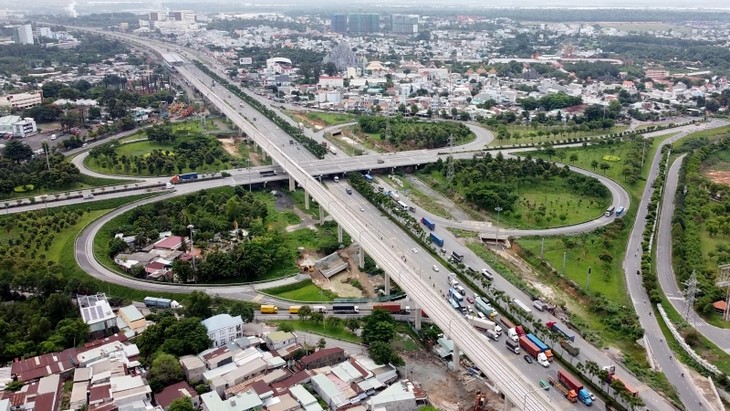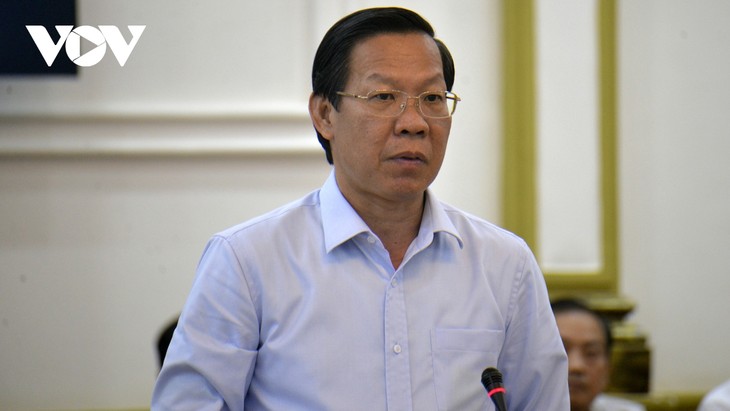(VOVWORLD) - Ho Chi Minh City is undergoing rapid urbanization marked by population growth, mechanization, economic growth, and changing lifestyles. The process demands a comprehensive review and assessment of, and new plan for, the city's transportation network. HCMC is planning to develop a railway system connecting it to nearby regions in line with a transit-oriented development (TOD) model.
 Ho Chi Minh City’s transportation system is closely linked to nearby regions and the rest of the country. (Photo: VOV) Ho Chi Minh City’s transportation system is closely linked to nearby regions and the rest of the country. (Photo: VOV) |
Ho Chi Minh City is linked to the rest of the country by 4 national highways, 6 national railway lines, and 6 expressways. It needs to consider alternative forms of transportation beyond its road network.
Architect Khuong Van Muoi, former Chairman of the municipal Association of Architects, says traffic is the lifeblood of the city, so it must be developed before the urban structure.
Muoi underscored the need to coordinate with other provinces and cities in the region to decide on a common system for travel and cargo transport.
Muoi said investment in HCMC’s transportation system serves not just the city, but a much wider region, adding, “I think the means of transportation from Ho Chi Minh City to other regions is key. We can't develop without linking to the localities around us.”
Waterways offer low cost but are slow and limited in their ability to carry passengers. But they’re very good for cargo transport between connected provinces and cities. Meanwhile, the TOD model promotes developing metro and inter-regional railway systems.
According to experts at the Vietnamese-German University, urban railways offer many advantages: conservation of energy and space, high-speed, and large passenger volume.
Dr. Vu Anh Tuan, Director of the Vietnamese-German Transport Research Centre at the Vietnamese-German University, said, “An urban railway meets all requirements of space, land-use efficiency, energy-use efficiency, high volume, speed, and safety. But it must have a populous suburban area, good urban planning, and a sound financial model.”
Associate Professor Dr. Pham Xuan Mai, a member of the traffic advisory council for Ho Chi Minh City, said the City should take into account the traffic of the whole region, which includes Ho Chi Minh City and 7 surrounding provinces. Railways should be the main mode of regional traffic.
“Within a radius of 120 to 200 km, we don’t think about aviation, and it’s impossible for waterways to expand much. So we believe the regional transportation system must be mainly road and railway. Railway will be the mainstay. The railway will use two train systems at the same time –passenger express trains and freight trains,” said Mai.
He added, “Once the system is completed, it will reduce transportation costs and traffic accidents, and increase economic efficiency and socio-economic mobility within the region.”
 Chairman of HCMC People's Committee Phan Van Mai Chairman of HCMC People's Committee Phan Van Mai
|
Phan Van Mai, Chairman of the municipal People's Committee, said Ho Chi Minh City will review the areas where road or rail traffic will lead the way. City traffic needs to be planned to link to neighboring provinces and cities and to national and international routes, said Mai.
“From the perspective of Ho Chi Minh City's interests, we must work together to expand. In order to make traffic run smoothly, we must develop a common way of thinking,” according to the municipal mayor.
Ho Chi Minh City is developing an urban construction plan to 2040 with a vision to 2060.